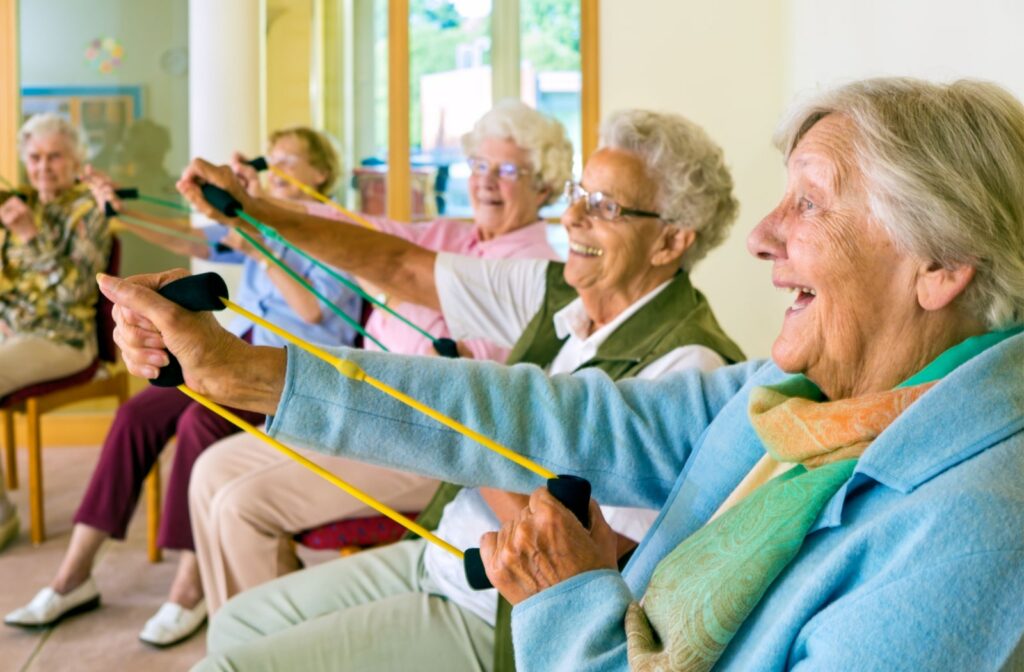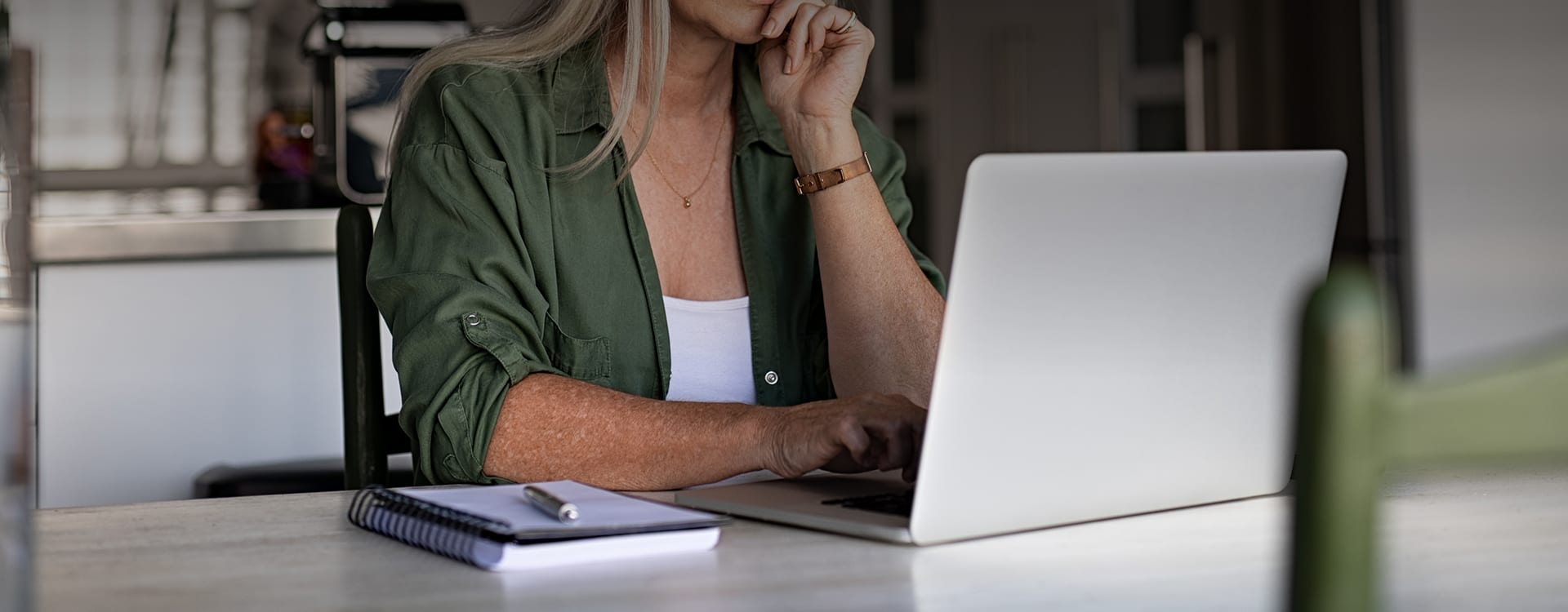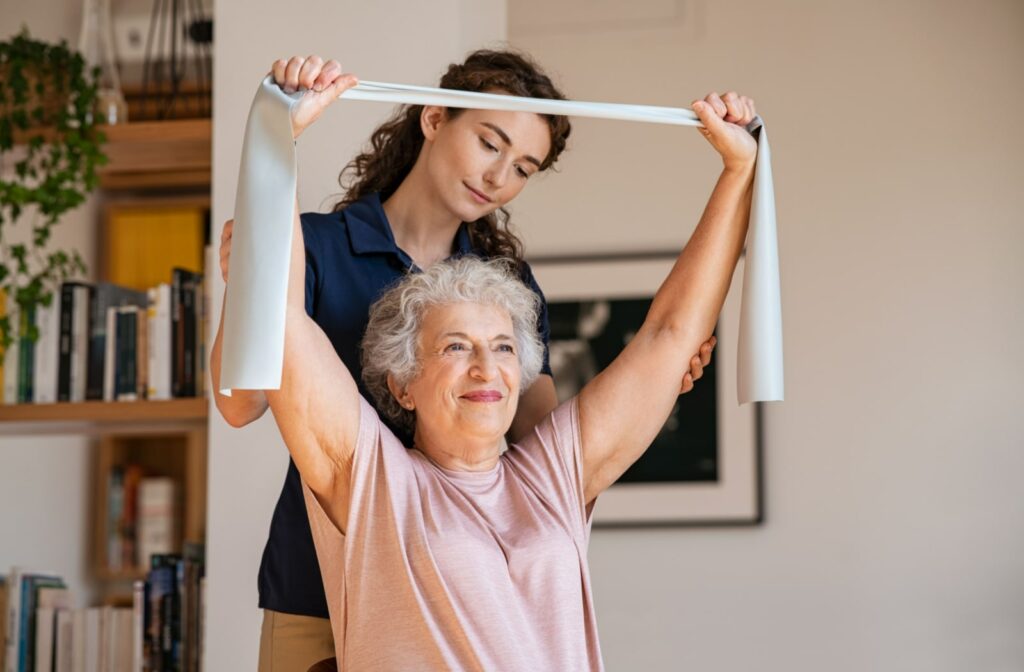Staying engaged with daily exercise can pose a challenge as we age and our physical abilities decline.
However, regular exercise can maintain physical and mental health, help improve mobility and reduce the risk of falls. Older adults in senior living communities can remain mobile by taking advantage of outdoor walking paths and fitness facilities.
Even despite one’s reduced mobility, many fitness programs with exercises guided by expert staff and therapists can improve strength, flexibility, and balance with minimal equipment.
The goal of these exercises for seniors with limited mobility is to maintain or improve their ability to perform daily activities, increase independence, and improve their quality of life.
Importance of Physical Exercise in Seniors
Physical activity is beneficial for seniors for several reasons:
- Physical function: Regular exercise can help seniors maintain or improve physical function, allowing them to continue performing everyday tasks with greater ease and independence.
- Preventing falls: Balance and mobility are closely related, and seniors with limited mobility are at a higher risk of falling. By improving strength, mobility, and balance through exercise, seniors can reduce their risk of falls and sustaining injuries.
- Mental health: Physical activity is associated with improved mental health, delayed onset of dementia, and better quality of life.
- Cardiovascular and general health: Regular physical activity can protect against cardiovascular disease, stroke, and diabetes.
How Much Physical Activity Do Seniors Need?
Adults 65 and older should strive for the following amount of exercise weekly:
- 150 minutes a week of moderate-intensity activity such as brisk walking.
- 2 days a week of strength training.
- 3 days a week of balance training, such as standing on one foot.
For those with limited mobility, exercise as much as your abilities and conditions allow.

Exercises for Seniors with Limited Mobility
The more exercise you engage in, the better the benefits. Even with limited mobility, a little is better than none. And more importantly, always consult a doctor or physical therapist before starting any exercise program, especially if you have a medical condition or injury.
Here are a few examples of exercises geared toward seniors with mobility challenges:
Chair Exercises
Chair-based exercises are low-intensity and can include simple standing movements, flexibility and range of motion. Chair-based yoga movements work on muscle control, balance, endurance, and breathing techniques.
Balance Exercises
Lower body strengthening exercises can improve balance for older adults and prevent falls. These can include standing on one foot, heel-to-toe walk, and balance walk.
Strength Training
Strength training exercises can make everyday tasks easier, such as getting out of a chair or climbing stairs. Seniors with limited mobility can use resistance bands, light weights, or bodyweight exercises to strengthen their muscles.
Stretch Exercises
Stretching can help with muscle strength and flexibility that can decline with age. Additional benefits include increased circulation, improved joint movement, posture and balance. Try any of these 7 stretches:
Neck Stretch
You can stretch the neck by slowly moving your chin towards your chest and turning your head to the left and right. Hold for 15 seconds on each side.
Shoulder & Upper Arm Stretch
Hold a towel with one hand over your head and let it fall down your back. Gently pull down until you feel a stretch in your shoulders and arms.
Chest Stretch
To ease tight muscles in the chest, you can extend both arms to your side and face the palms forward. Reach back with both hands until you feel a stretch, being careful not to overstretch.
Ankle Stretch
You can stretch your ankles by sitting in a chair and slowly moving your foot side to side and up and down while holding for 30 seconds each time.
Hamstring Stretch
You can stretch your hamstrings by lying on your back and extending one leg perpendicular to your body. Pull your leg towards you by holding at the back of your thigh, not the knee.
Quadriceps Stretch
To stretch the large muscles in the front of your thigh, lie on your side, bend your knee, and pull your foot gently behind you until you feel a stretch. If you can’t reach your foot, use a belt or towel.
Hip Stretch
To stretch and release tension in the hips, you can lie on your back and bring one knee to the side of the body with your foot resting on the opposite leg. Push down on the knee gently until you feel a stretch.
Exercise & Wellness
It’s vital for seniors with limited mobility to make exercise a part of their daily life, starting slowly and gradually increasing the amount and level. But more essential is staying safe when exercising and having the support you need.
At Bethany Village, our state-of-the-art fitness center and rehabilitation center ensure residents get a personalized approach to their care needs. Schedule a visit to learn more.

